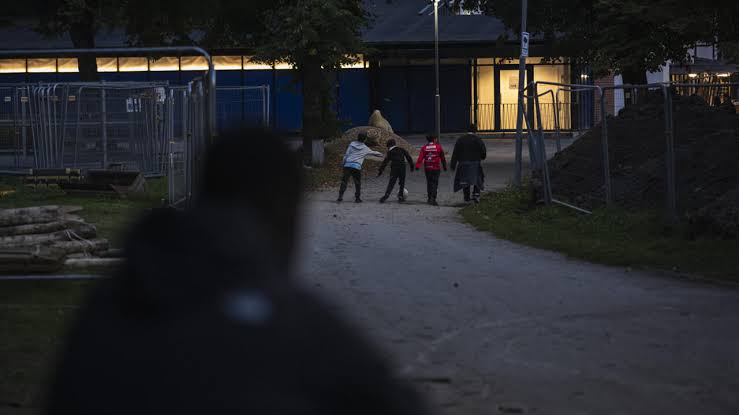
In Sweden, criminal gangs are increasingly recruiting children through encrypted chat apps, exploiting their age to evade legal consequences. In one chilling exchange, an 11-year-old boy wrote on Instagram, “Bro, I can’t wait for my first dead body,” to which a 19-year-old contact replied, “Stay motivated, it’ll come,” offering 150,000 kronor ($13,680), clothing, and transport to commit a murder.
The boy, along with three other minors aged 11 to 17, was recruited by four men aged 18 to 20 to carry out crimes for a gang in the province of Värmland. The suspects were arrested before the crimes could be executed, according to a police investigation seen by AFP. Screenshots from the inquiry show the minors posing with weapons, often masked or shirtless.
When questioned by police, the 11-year-old admitted he made the statement to appear “cool” and hide his fear.
A Growing Crisis
This case is not isolated. Sweden has seen a surge in gang-related shootings and bombings linked to drug market disputes and score-settling. In 2022 alone, 53 people were killed in shootings, many of them in public spaces, with innocent victims increasingly caught in the crossfire.
Gangs operate through intermediaries, often abroad, using platforms like Telegram, Snapchat, and Signal to post “job offers.” These assignments are subcontracted, and interactions remain anonymous, according to Johan Olsson, head of Sweden’s National Operations Department (NOA).
The trend is alarming: murder-related cases involving suspects under the age of 15 have skyrocketed, from 31 in the first eight months of 2022 to 102 during the same period in 2023.
Targeting Vulnerable Youth
Children recruited into gangs are often struggling academically, dealing with addiction, or battling attention deficit disorders, according to criminology professor Sven Granath. Many have no prior gang affiliation but are lured by promises of cash, flashy clothes, adrenaline, and a sense of belonging.
Social media platforms, including TikTok, contribute to the allure. “Nowadays, everybody wants to be a murderer,” said Viktor Grewe, a former gang member who left the lifestyle at 22. He noted the rise of “crimfluencers” who glorify criminal behavior online.
Ruthless Exploitation
The use of children is part of a calculated business model. “They’re just mercenaries,” Granath explained, adding that children are drawn into conflicts they don’t understand and face severe consequences if they try to leave.
Police commander Tony Quiroga from Örebro described it as “ruthless exploitation.” Gangs hide behind pseudonyms, creating layers of anonymity to shield themselves from accountability. Meanwhile, local volunteers patrol disadvantaged neighborhoods, warning youth about the risks of gang involvement.
Despite these efforts, the cycle of violence persists. “These are conflicts that never end,” Quiroga said. For many young recruits, the grim reality is that they don’t expect to live past 25.